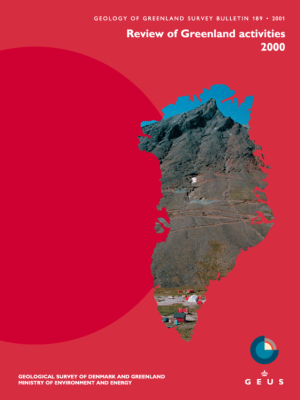Pre-basaltic sediments (Aptian–Paleocene) of the Kangerlussuaq Basin, southern East Greenland
DOI:
https://doi.org/10.34194/ggub.v189.5163Abstract
The recent licensing round in the deep-water areas south-east of the Faeroe Islands has emphasised the continued interest of the oil industry in the frontier areas of the North Atlantic volcanic margins. The search for hydrocarbons is at present focused on the Cretaceous– Paleocene succession with the Paleocene deepwater play as the most promising (Lamers & Carmichael 1999). The exploration and evaluation of possible plays are almost solely based on seismic interpretation and limited log and core data from wells in the area west of the Shetlands. The Kangerlussuaq Basin in southern East Greenland (Fig. 1) provides, however, important information on basin evolution prior to and during continental break-up that finally led to active sea-floor spreading in the northern North Atlantic. In addition, palaeogeographic reconstructions locate the southern East Greenland margin only 50–100 km north-west of the present-day Faeroe Islands (Skogseid et al. 2000), suggesting the possibility of sediment supply to the offshore basins before the onset of rifting and sea-floor spreading. In this region the Lower Cretaceous – Palaeogene sedimentary succession reaches almost 1 km in thickness and comprises sediments of the Kangerdlugssuaq Group and the siliciclastic lower part of the otherwise basaltic Blosseville Group (Fig. 2). Note that the Kangerdlugssuaq Group was defined when the fjord Kangerlussuaq was known as ‘Kangerdlugssuaq’. Based on field work by the Geological Survey of Denmark and Greenland (GEUS) during summer 1995 (Larsen et al. 1996), the sedimentology, sequence stratigraphy and basin evolution of the Kangerlussuaq Basin were interpreted and compared with the deep-water offshore areas of the North Atlantic (Larsen et al. 1999a, b).
Downloads
Published
Issue
Section
License
This article is distributed under a CC-BY 4.0 licence, permitting free redistribution and reproduction for any purpose, even commercial, provided proper citation of the original work. Author(s) retain copyright over the article contents.


